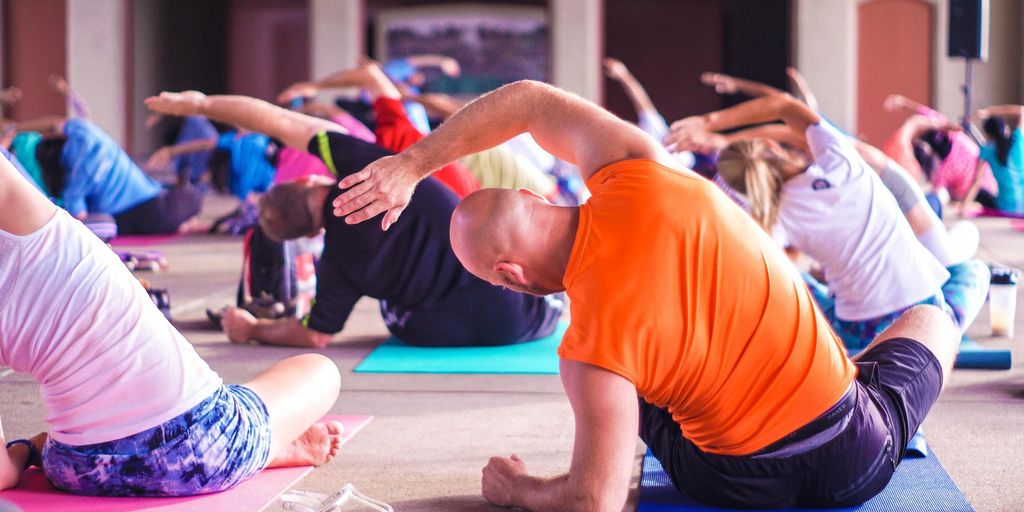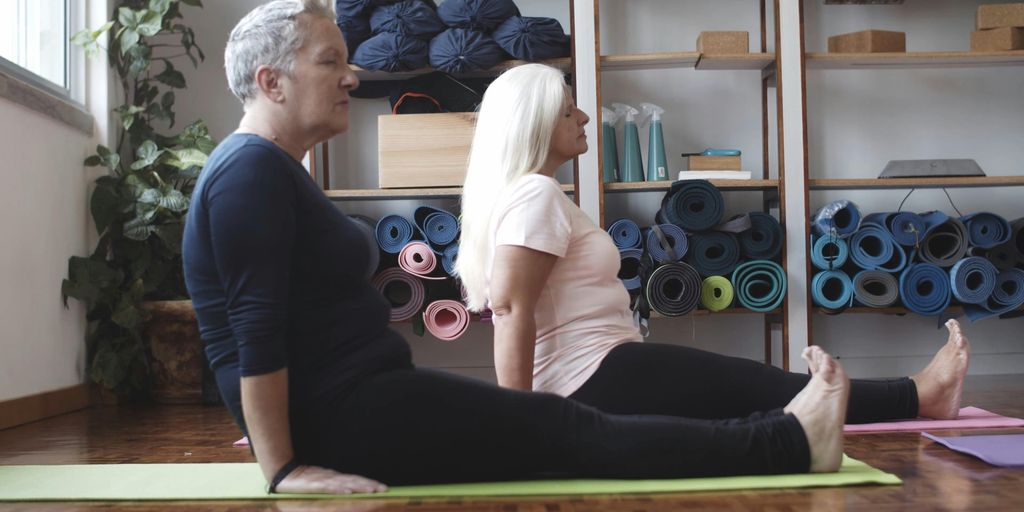
Choosing the Right Yoga Mat: A Comprehensive Guide for Beginners
Choosing the right yoga mat is crucial for beginners who want to establish a consistent and comfortable practice. With a variety of options available, it's important to understand the different features and benefits of each type to make an informed decision. This comprehensive guide will walk you through the key factors to consider when selecting a yoga mat that suits your needs and enhances your practice.
Key Takeaways
- Understanding the different materials, thickness, and eco-friendly options can help you choose the best mat for your practice.
- Assessing your yoga style and body's needs is essential in selecting a mat that offers the right support and comfort.
- Grip and texture are important factors that impact your performance and safety during yoga sessions.
- Proper care, including cleaning and storage, can extend the life of your yoga mat and maintain its quality.
- Weighing the pros and cons of budget-friendly versus premium yoga mats can help you find an option that fits your budget and practice requirements.
Understanding Different Types of Yoga Mats
Choosing the right yoga mat can be a daunting task, especially with the variety of options available. This section will help you navigate through the different types of yoga mats to find the one that best suits your needs.
Material Options
Yoga mats come in various materials, each offering unique benefits. PVC mats are durable and provide excellent grip, but they are not eco-friendly. TPE mats are a more environmentally friendly option, offering a balance between durability and comfort. Natural rubber mats are another eco-friendly choice, known for their excellent grip and cushioning.
Thickness and Cushioning
The thickness of a yoga mat can significantly impact your practice. Mats typically range from 1/16 inch to 1/4 inch in thickness. Thicker mats provide more cushioning, which is beneficial for those with sensitive joints. However, they can be less stable for balance poses. Thinner mats offer better stability but less cushioning.
Eco-Friendly Choices
For those who prioritize sustainability, eco-friendly yoga mats are a great option. These mats are made from natural or recycled materials and are free from harmful chemicals. Options include natural rubber, jute, and organic cotton mats. Choosing an eco-friendly mat not only benefits you but also the environment.
When selecting a yoga mat, consider your personal needs and preferences to ensure you make the best choice for your practice.
How to Choose the Right Yoga Mat for Your Practice
Assessing Your Yoga Style
Different yoga styles require different types of mats. For instance, if you practice hot yoga, you'll need a mat with excellent grip and moisture absorption. On the other hand, for restorative yoga, a thicker mat with more cushioning might be ideal. Understanding your yoga style is crucial in making the right choice.
Considering Your Body's Needs
Your body's needs play a significant role in choosing the right mat. If you have sensitive joints, a mat with extra cushioning can provide the necessary support. Conversely, if you prefer a closer connection to the floor, a thinner mat might be more suitable. Always consider your comfort and physical requirements when selecting a mat.
Evaluating Durability
Durability is an important factor, especially if you practice yoga frequently. Look for mats made from high-quality materials that can withstand regular use. While premium mats may have a higher upfront cost, they often offer better longevity, making them a worthwhile investment in the long run.
Choosing the right yoga mat is crucial for beginners. Consider comfort, grip, size, and budget. Maintain your mat for hygiene. Top brands include Liforme, Manduka, Jade Yoga, and Gaiam.
The Importance of Grip and Texture in Yoga Mats
Non-Slip Surfaces
A non-slip surface is crucial for maintaining stability during your practice. Texture also plays a role in grip, with smoother surfaces being easier to clean and textured mats providing better traction. This is especially important for poses that require a firm hold.
Texture Preferences
Your personal preference for texture can significantly impact your yoga experience. Some practitioners prefer a smooth mat for its ease of cleaning, while others opt for a textured mat for the added grip it provides. Consider your personal comfort and the type of yoga you practice when making your choice.
Impact on Performance
The grip and texture of your yoga mat can directly affect your performance. A mat with good grip can help you maintain poses longer and with more stability, reducing the risk of injury. Conversely, a mat that lacks proper grip can make it difficult to hold poses, impacting your overall practice.
Remember, the right combination of grip and texture can enhance your yoga practice, making it more enjoyable and effective.
Caring for Your Yoga Mat
Cleaning Techniques
Regular cleaning is essential to maintain the hygiene and longevity of your yoga mat. How to disinfect your mat is a common concern among practitioners. Use hydrogen peroxide or dishwashing or laundry soap mixed with water in a spray bottle as your disinfecting solution. Spritz the solution onto the mat and wipe it down with a clean cloth. This method ensures that your mat remains free from bacteria and unpleasant odors.
Storage Tips
Proper storage of your yoga mat can significantly extend its lifespan. Always roll your mat with the practice side facing out to prevent curling edges. Store it in a cool, dry place away from direct sunlight to avoid material degradation. Using a yoga mat bag can also protect it from dust and dirt.
When to Replace Your Mat
Knowing when to replace your yoga mat is crucial for maintaining a safe practice. Signs that it's time for a new mat include visible wear and tear, loss of grip, and reduced cushioning. If you notice any of these issues, it's best to invest in a new mat to ensure optimal performance and safety during your sessions.
Regular maintenance and proper care can significantly extend the life of your yoga mat, ensuring a clean and supportive surface for your practice.
Budget-Friendly Yoga Mats vs. Premium Options
Cost vs. Quality
When choosing a yoga mat, cost vs. quality is a significant consideration. Budget-friendly mats are often more affordable but may lack some of the features found in premium options. On the other hand, premium mats tend to offer better durability, grip, and comfort.
Features of Budget Mats
Budget-friendly yoga mats typically offer basic features suitable for beginners. These mats are usually made from PVC or other synthetic materials and provide adequate cushioning for most yoga practices. However, they may wear out faster and offer less grip compared to premium mats.
Advantages of Premium Mats
Premium yoga mats come with several advantages, including superior grip, enhanced durability, and eco-friendly materials. These mats often feature additional cushioning and are designed to withstand intense and frequent use. Investing in a premium mat can enhance your overall yoga experience and provide long-term value.
Choosing between a budget-friendly and a premium yoga mat depends on your specific needs, practice frequency, and budget. Consider what features are most important to you and how much you're willing to invest in your yoga practice.
Travel-Friendly Yoga Mats
Portability Features
When selecting a travel-friendly yoga mat, portability is key. Look for mats that are lightweight and easy to fold or roll up. Some mats come with carrying straps or bags, making them even more convenient to transport.
Compact Designs
Compact designs are essential for travel yoga mats. These mats are often thinner and can be folded into a smaller size, fitting easily into your luggage or backpack. Despite their compact nature, they should still provide adequate support and cushioning.
Durability for Travel
Durability is crucial for a travel yoga mat. It needs to withstand frequent use and various surfaces, from hotel room floors to outdoor settings. Look for mats made from high-quality materials that resist wear and tear. A durable mat ensures you can maintain your practice wherever you go.
A good travel yoga mat combines portability, compact design, and durability, allowing you to practice yoga consistently, no matter where your travels take you.
Discover the ultimate travel-friendly yoga mats at Yune Yoga! Our foldable mats are designed to make your yoga practice convenient and enjoyable, no matter where you are. Lightweight and easy to pack, these mats are perfect for yogis on the go. Visit our website to explore our collection and find the perfect mat for your next adventure.
Conclusion
Choosing the right yoga mat is an essential step for beginners embarking on their yoga journey. By considering factors such as material, thickness, texture, and price, you can find a mat that suits your individual needs and enhances your practice. Remember, the best yoga mat is one that provides comfort, stability, and durability, allowing you to focus on your poses and breathing without distraction. Take your time to explore different options and invest in a mat that will support your growth and commitment to yoga. Happy practicing!
Frequently Asked Questions
What is the best material for a yoga mat?
The best material depends on your needs and preferences. Common materials include PVC, TPE, rubber, and natural fibers like jute or cotton. PVC mats are durable and offer good grip, while natural materials are eco-friendly.
How thick should my yoga mat be?
Thickness varies based on personal comfort and the type of yoga you practice. Standard mats are about 1/8 inch thick, while thicker mats (up to 1/4 inch) provide more cushioning for joints.
Are eco-friendly yoga mats worth it?
Eco-friendly mats are made from sustainable materials and are biodegradable. They can be a bit more expensive but are worth it if you are environmentally conscious and prefer natural materials.
How do I clean my yoga mat?
Most yoga mats can be cleaned with a mixture of water and mild detergent. Spray the solution on the mat and wipe it down with a cloth. Some mats are also machine washable.
How often should I replace my yoga mat?
It depends on the frequency of use and the material of the mat. Generally, a yoga mat should be replaced every 6-12 months if used regularly. Signs that it needs replacement include wear and tear, loss of grip, or an unpleasant odor.
What features should I look for in a travel yoga mat?
A travel yoga mat should be lightweight, compact, and easy to fold or roll up. Look for mats made from durable materials that can withstand frequent use and transportation.


